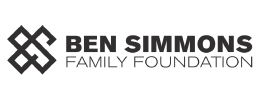PRIVACY POLICY
Helping Hoops is committed to protecting the privacy of personal information. This Privacy Policy explains how Helping Hoops collects, uses, discloses and otherwise handles personal information in accordance with the Australian Privacy Principles (APPs) which are contained in the Privacy Act 1988 (Cth) (Privacy Act).
Helping Hoops recognises the essential right of individuals to have their information administered in ways which they would reasonably expected – protected on one hand and made accessible to them on the other. These privacy values are reflected in and supported by our core values.
For the purposes of this policy, ‘personal information’ means information or an opinion about an identified individual, or an individual who is reasonably identifiable.
If you have any questions or feedback about this policy or the way in which Helping Hoops handles personal information you can contact us by email on: info@helpinghoops.com.au
What types of personal information do we collect?
The types of personal information that we collect about you will depend on the type of dealing you have with us. For example, if you or your child:
- Enquire about our programs, we may collect your name and contact details
- Become a participant of Helping Hoops, we may collect your name, address, date of birth and personal information that may need to be considered when performing physical activity.
- Register for a membership to Helping Hoops, we may collect your name, organisation, contact details, the amount and frequency of your membership donation and payment details
- Make a donation to Helping Hoops, we may collect your name, organisation, contact details, the amount and frequency of your donation and payment details
- Attend a Helping Hoops event, we may collect your name, organisation, contact details, payment details (if applicable) and any dietary and accessibility requirements
- Send us an enquiry, we may collect your name, contact details, information about your circumstances and details of your query
- Make a complaint, we may collect your name, contact details, the details of your complaint, information collected in any investigation of the matter and details of the resolution of the complaint
- Apply for a volunteering or other role at Helping Hoops, we may collect the information you include in your application, including your cover letter, resume, contact details and referee reports
Sensitive information
Some personal information, such as health information (including mental & physical health information and information about a disability), whether or not you have a criminal record is sensitive and requires a higher level of protection under the Privacy Act. We may collect your/your child’s sensitive information with your consent and when the collection is reasonably necessary for us to carry out one or more of our functions or activities.
Sensitive information is generally relevant to an assessment of whether a person is eligible to participate in our programs.
How do we collect personal information?
We collect personal information in a number of ways, including:
- Through our website (for example, if you choose to donate to Helping Hoops online through our secure payment gateway or to enrol your child in a program)
- When you correspond with us (for example by letter, email or telephone)
- On hard copy forms (for example, permission slips to attend an off site event)
- In person (for example, when enrolling children in programs)
- From referring third parties such as social worker referrals
- At events and forums
- From third parties such as a school or referrers who refer you to us for participation with your consent
Why do we collect personal information?
The main purposes for which we collect, hold, use and disclose personal information are set out below.
Participation in a Helping Hoops Program
- Enrolling children into our programs,
- Determining whether a participant may have any special needs, such as disability assistance, or certain physical or mental health considerations
- Emergency contact details for children
- Parental consent for children to participate in the program
Fundraising
- Seeking funding and donations
- Organising fundraising events
- Reporting to funding providers
General administration
- Recruiting staff, and volunteers
- Processing payments
- Answering queries and resolving complaints
- Evaluating our work and reporting externally
Who do we disclose your personal information to?
The nature of the services provided by Helping Hoops means that it is often necessary for us to disclose your personal information to other parties, like the Head Coach of the program your child is participating in. We will let you know who we need to disclose your personal information to when we collect the information from you.
Common third parties we might need to disclose your personal information to include:
- Helping Hoops staff & the Head Coach of the Helping Hoops program
- Volunteers of the Helping Hoops program (your child is attending only)
- Our funding providers (although personal information will only be provided with consent)
- Helping Hoops stakeholders, including the President and Committee members
- Financial institutions for payment processing
- Referees whose details are provided to us by job applicants
- Other service providers which include:
- Information technology service providers and volunteers
- Event and training organisers
- Marketing, communications and research agencies
- Courier services (such as Australia Post)
- Printers and distributors of direct marketing material
- External business advisers (such as auditors and lawyers)
Direct marketing & Program specific notifications
Direct marketing is the promotion of goods and services directly to you including through emails, SMS, phone calls and the post. We will only send you direct marketing materials if you would reasonably expect to receive them or you have consented. If it is impractical to gain your consent, we will always provide a simple means for you to request not to receive the material (‘opting out’). We will not use your sensitive information for the purposes of direct marketing unless you have given us prior consent. Program specific SMS notifications are often sent to advise of last minute program cancelations or pertinent information related to your Helping Hoops program.
Opting out
You can opt out of receiving marketing communications or program notifications from us by:
- using the unsubscribe facility that we include in our commercial electronic messages (such as email and SMS) to opt out of receiving those messages, or
- contacting us by email at info@helpinghoops.com.au
Storage and security of the information we hold
We hold personal information in both hard copy and electronic formats. Paper files are stored in a secure room onsite.
The security of your personal information is important to us and we use the recommended industry standards when storing and dealing with your personal information. Personal information is often obtained via an online application or smart phone. The cloud based applications we use to, for example enrol children into the program, uphold the highest standards and relevant encryptions to keep personal information private.
The steps we take to secure the personal information we hold include:
- Website protection measures (such as encryption, firewalls and anti-virus software)
- Access restrictions to our computer systems (such as login and password protection)
- Restricted access to our office premises
- Staff training and implementation of workplace policies and procedures that cover access, storage and security of information.
Website security
While Helping Hoops strives to protect the personal information and privacy of users of our website, we cannot guarantee the security of any information that you disclose online and you disclose that information at your own risk. If you are concerned about sending your information over the Internet, you can contact Helping Hoops by telephone or post (details under ‘Contacting Us’).
You can also help to protect the privacy of your personal information by letting us know as soon as possible if you become aware of any security breach.
Copyright
Helping Hoops is responsible for managing its assets, including its intellectual assests, in a way that maximises their contributions to the goals of the organisation.
Subject to these responsibilities, Helping Hoops is committed to the widest possible dissemination of its ideas and findings where these may assist others.
The purpose of this policy is to clarify the status of material subject to copyright used by the organisation, and to remove any possible misunderstandings about ownership of copyrights.
Production of copyright material
All materials that result from activities carried out at Helping Hoops or developed with the aid of Helping Hoops’ facilities shall be the property of Helping Hoops.
Work by independent contractors shall be owned in accordance with the contract under which the work was created. Helping Hoops shall ensure that there is a written contract for work by an independent contractor specifying ownership.
Use of copyright material and copyright on materials
All employees and volunteers of Helping Hoops are required to observe all applicable copyright laws and regulations. Any materials subject to copyright cannot be reproduced by any process, other than for the purposes of and subject to the provisions of the Copyright Act and any licensing agreement between the user and Helping Hoops.
Acceptable use of computer, internet and email
Helping Hoops recognises that staff need access to email systems and the Internet to assist in the efficient and professional delivery of services. Helping Hoops supports the right of staff to have access to reasonable personal use of the Internet and email communications.
The primary purpose for which access to the Internet and email is provided to Helping Hoops staff and volunteers is to assist them in carrying out the duties of their employment.
It is expected that at all times, employees and volunteers use computers, internet and email in an appropriate manner and for the chief purpose of carrying out their duties.
Individuals may not use Internet or email access (including internal email access) provided by Helping Hoops to:
- Create or exchange messages that are offensive, harassing, obscene or threatening
- Visit websites containing objectionable (including pornographic) or criminal material
- Exchange any confidential or sensitive information held by Helping Hoops (unless in the authorised course of their duties)
- Create, store or exchange information in violation of copyright laws (including the uploading or downloading of commercial software, games, music or movies)
- Use internet-enabled activities such as gambling, gaming, conducting a business or conducting illegal activities
- Create or exchange advertisements, solicitations, chain letters and other unsolicited or bulk emails.
This policy is binding on all Helping Hoops stakeholders, whether paid or voluntary and is reviewed annually.
COVID-19 SAFETY PLAN
| Helping Hoops Inc |
|
| All programs |
Fitzroy, Prahran, Broadmeadows, Footscray Future, Croxton, Dandenong, Dandenong Future, Kensington, Richmond, North Melbourne, Werribee, Werribee Future, Power Fitzroy |
| Locations |
Refer to page 9 |
| Contact person/people |
Executive Director, Clinton Meehan & Operations Manager, Teuila Reid |
| Contact Email |
info@helpinghoops.com.au |
| Contact Mobile Number |
0418 353 314 |
| Version |
1: June 2020 |
| Covid safe coordinator (Teuila Reid) is responsible for this document |
Table of Contents
- Introduction……………………………………………………………………………………………………………………. 3
- Key Principles………………………………………………………………………………………………………………… 3
- Responsibilities under this Plan……………………………………………………………………………………. 4
- Return to Sport Arrangements……………………………………………………………………………………… 4
4.1 BV Framework Arrangements 4
4.2 Roadmap to a COVIDSafe Australia 5
- Recovery………………………………………………………………………………………………………………………… 5
Appendix: Outline of Return to Sport Arrangements………………………………………………………….. 6
Part 1 – Sport Operations 6
Part 2 – Facility Operations 9
- Introduction
The purpose of this COVID-19 Safety Plan is to provide an overarching plan for the implementation and management of procedures by Helping Hoops and its members and participants in the staged resumption of our community based basketball programs.
The arrangements set out in this Plan are intended to prevent the transmission of COVID-19 among members, participants, coaches, volunteers, visitors, families and the broader community. The Plan provides the framework to govern the general operation of Helping Hoops across the facilities it runs their programs, the training of all participants and the monitoring and reporting of the health of participants across all program locations.
This Plan includes, but is not limited to, the conduct of:
- Programs; and
- Facility management and supporting operations (facility operations).
At all times the Plan is subject to all regulations, guidelines and directions of government and public health authorities.
- Key Principles
This Plan is based on, and accepts, the AIS Framework for Rebooting Sport in a COVID-19 Environment (AIS Framework), the National Principles for the Resumption of Sport and Recreation Activities (National Principles) and Basketball Victoria’s Return to Sport Guidelines.
The Plan also accepts as key principles that:
- The health and safety of participants, coaches, volunteers, staff, visitors, families and the broader community is the number one priority;
- Participants, staff, coaches, volunteers, families and the broader community need to be engaged and briefed on Helping Hoops return to sport plans;
- Facilities are assessed and appropriate plans are developed to accommodate upgraded hygiene protocols, physical distancing and other measures to mitigate the risk of transmission of COVID-19;
- Helping Hoops programs cannot resume until the arrangements for sport and facility operations are finalised and approved, if necessary; and
- At every stage of the return to sport process Helping Hoops must consider and apply all applicable State and Territory Government and local restrictions and regulations. Helping Hoops needs to be prepared for any localised outbreak at our program locations and within our local communities.
- Responsibilities under this Plan
Helping Hoops retains the overall responsibility for the effective management and implementation of the return to sport activities and operations outlined in this Plan.
The Executive Director of Helping Hoops is responsible for:
- Approving the Plan, sharing the Plan with Helping Hoops nominated Committee and overseeing the implementation of the arrangements in the Plan.
The Operations Manager of Helping Hoops is responsible for:
- Revising the Plan as required, ensuring it reflects up to date information from government and public health officials and managing the implementation of the arrangements in the plan.
The Executive Director has appointed the following person as the Helping Hoops COVID-19 Safety Coordinator to execute the delivery of the Plan and to act as a point of contact for information relating to this Plan:
| Name |
Teuila Reid |
| Contact Email |
info@helpinghoops.com.au |
| Contact Number |
0418 353 314 |
Helping Hoops expects all participants, coaches, staff and volunteers to:
- Comply with the health directions of government and public health authorities as issued from time to time;
- Understand and act in accordance with this Plan as amended from time to time;
- Comply with any testing and precautionary measures, like temperature checks implemented by Helping Hoops;
- Act with honesty and integrity in regard to the state of their personal health and any potential symptoms; and
- Monitor their health and take a cautious approach to self-isolation and reporting of potential symptoms.
- Return to Sport Arrangements
As of May 11, 2020, select participants are involved in training at Level A of the AIS Framework. The Plan outlines specific sport requirements that Helping Hoops will implement for Level B and Level C of the AIS Framework.
Helping Hoops will transition to the training activity and facility use as outlined in Level B of the framework and our program activities and facility use outlined in Level C of the AIS Framework when permitted under local restrictions and regulations.
- AIS Framework Arrangements
The protocols for conducting sport operations and facility operations under Level B and Level C of the AIS Framework are set out in the Appendix.
- Roadmap to a COVIDSafe Australia
Helping Hoops will also comply with the Australian government’s Roadmap to a COVIDSafe Australia, which places limits on the type of activity that can be conducted and the number of people who can gather at facilities, notwithstanding the activities permitted by the AIS Framework (see below).
| Activities |
Level A:
Training in no more than pairs. Physical distancing required. |
Level B:
Indoor/outdoor activity. Training in small groups up to 10. Physical distancing required. |
Level C:
Full sporting activity (training and competition) allowed. No restriction on numbers. Contact allowed. |
| Roadmap Activities |
N/A |
Step 1:
No indoor activity. Outdoor sport (up to 10 people) consistent with AIS Framework. |
Step 2:
Indoor/outdoor sport up to 20 people. Physical distancing (density 4m2). |
Step 3:
Venues allowed to operate with up to 100 people with physical distancing. Community sport expansion to be considered consistent with AIS Framework. |
Further steps TBC |
|
|
|
|
|
|
- Recovery
When public health officials determine that the outbreak has ended in the local community, Helping Hoops will consult with relevant authorities to identify criteria for scaling back its COVID-19 prevention actions. Helping Hoops will also consider which protocols can remain to optimise good public and participant health.
At this time Helping Hoops management will consult with key stakeholders to review the delivery of its return to sport arrangements and use feedback to improve organisational plans and systems.
Appendix: Outline of Return to Sport Arrangements
Part 1 – Sport Operations
| Area |
Plan Requirements (for activities under AIS Framework Level B)
|
Plan Requirements (for activities under AIS Framework Level C)
|
| Approvals |
Helping Hoops must obtain the following approvals to allow a return to training at Level B:
· State/Territory Government approval of the resumption of community sport.
· Relaxation of public gathering restrictions to enable training to occur.
· Local government/venue owner approval to training at venue, if required.
· National/state sporting body/local association approval of return to training for community sport.
· Committee has approved return to selected programs
· Insurance arrangements confirmed to cover programs.
· All coaches, volunteers and staff attend covid safe training prior to resumption of program. |
Helping Hoops must obtain the following approvals to allow a return to training at Level C:
· Relaxation of public gathering restrictions to enable training to occur.
· Local government/venue owner approval to training at venue, if required.
· National/state sporting body/local association approval of return to training for community sport.
· Committee has approved return to selected programs
· Insurance arrangements confirmed to cover programs.
· All coaches, volunteers and staff attend covid safe training prior to resumption of program. |
| Program Processes |
· All participants upon arrival to programs will be subject to the following mandatory requirements in order to participate:
· 1: Covid safe coordinator/volunteer to record first, last name, address and phone number of each participant and volunteer.
· 2: Covid safe coordinator/volunteer to capture and record temperature of each participant via infrared contactless thermometer. Should temperature be outside of the vulnerable range (over 38 degrees Celsius) participant will be instructed to return home immediately.
· 3: Covid safe coordinator/volunteer to dispense antibacterial hand gel onto participant and watch them apply over both hands.
· 4: Covid safe coordinator/volunteer to tell participants they must not touch each other, they must cough/sneeze into their elbow and maintain 1.5 metres between each other as best as they can. These instructions will also be available on laminated posters.
· 5: Covid safe coordinator/volunteer to give participant a coloured bib to wear to indicate they have been checked and ready to get on court.
· Length of program sessions (if attendance is over 20 participants)
· 1: If participant numbers exceed 20, the Helping Hoops session will run for one hour only. Waiting participants will be encouraged to go home and return in an hour. 50 minutes into the first session it will end and those participants will be instructed to leave the court and return home immediately, leaving the court vacant (outside of Coaches and volunteers) for the second group to join in. Same registration and hygiene processes per step 1-4 will apply for the second group of participants.
· No contact at programs, including high fives/hand shaking or socialising inside of 1.5 metres.
· Defined training areas will be set up for each training group, maintaining base density requirement of 4 square metres per person and physical distancing (>1.5 metres).
· Shared equipment sanitation procedures
· 1: Prior to each session all basketballs, cones and other equipment to be sprayed down with Dettol spray as provided in covid safe kits and left to stand for 10 minutes, after this time wiped down with wipes provided. Gloves must be worn for this process.
· Programs must limit the sharing of personal equipment.
· Personal hygiene encouraged (e.g. wash hands prior to training, no spitting or coughing).
· Training attendance register must be kept. * |
· All participants upon arrival to programs will be subject to the following mandatory requirements in order to participate:
· 1: Covid safe coordinator/volunteer to record first, last name, address and phone number of each participant.
· 2: Covid safe coordinator/volunteer to capture and record temperature of each participant via infrared contactless thermometer. Should temperature be outside of the vulnerable range (over 38 degrees Celsius) participant will be instructed to return home immediately.
· 3: Covid safe coordinator/volunteer to dispense antibacterial hand gel onto participant and watch them apply over both hands.
· 4: Covid safe coordinator/volunteer to tell participants they must not touch each other, they must cough/sneeze into their elbow and maintain 1.5 metres between each other as best as they can. These instructions will also be available on laminated posters.
· 5: Covid safe coordinator/volunteer to give participant a coloured bib to wear to indicate they have been checked and ready to get on court.
· No contact at programs, including high fives/hand shaking or socialising inside of 1.5 metres.
· Defined training areas will be set up for each training group, maintaining base density requirement of 4 square metres per person and physical distancing (>1.5 metres).
· Shared equipment sanitation procedures
· 1: Prior to each session all basketballs, cones and other equipment to be sprayed down with Dettol spray as provided in covid safe kits and left to stand for 10 minutes, after this time wiped down with wipes provided. Gloves must be worn for this process.
· Programs must limit the sharing of personal equipment.
· Personal hygiene encouraged (e.g. wash hands prior to training, no spitting or coughing).
· Training attendance register must be kept. |
| Personal health |
Personal health protocols, include the following:
· All coaches, volunteers and participants to not attend programs if unwell (including any mild symptoms of cold, flu, covid19 or other illnesses.
· Washing of hands prior to, during and after programs and use of hand sanitiser at all outdoor programs without access to running water.
· Avoid physical greetings (i.e. hand shaking, high fives etc.).
· Avoid coughing, clearing nose, spitting etc.
· All bibs to be laundered after each program session. |
Personal health protocols, include the following:
· All coaches, volunteers and participants to not attend programs if unwell (including any mild symptoms of cold, flu, covid19 or other illnesses.
· Washing of hands prior to, during and after programs and use of hand sanitiser at all outdoor programs without access to running water.
· Avoid physical greetings (i.e. hand shaking, high fives etc.).
· Avoid coughing, clearing nose, spitting etc.
All bibs to be laundered after each program session. |
| Hygiene |
Hygiene protocols:
· All staff, volunteers and participants to ensure they have washed their hands with soap and water and/or used antibacterial hand gel/spray prior to participation.
· Covid safe coordination/volunteer keeping attendance and taking temperature to wear latex gloves.
· Guidelines for sanitisation and cleaning:
· 1: Put on gloves and lay out all equipment on a flat surface
· 2: Using Antibacterial Dettol spray, dispense onto entire surface area of equipment. Leave to stand for 10 minutes
· 3: Wipe down with cloth provided (dispose of cloth and gloves) |
Hygiene protocols:
· All staff, volunteers and participants to ensure they have washed their hands with soap and water and/or used antibacterial hand gel/spray prior to participation.
· Covid safe coordination/volunteer keeping attendance and taking temperature to wear latex gloves.
· Guidelines for sanitisation and cleaning:
· 1: Put on gloves and lay out all equipment on a flat surface
· 2: Using Antibacterial Dettol spray, dispense onto entire surface area of equipment. Leave to stand for 10 minutes
· 3: Wipe down with cloth provided (dispose of cloth and gloves) |
| Communications |
· Coaches, staff and committee: To attend regular meetings in order to share updates and incidents AND attend covid safe training prior to program resumption
· Volunteers: To attend covid safe training prior to program resumption and provided updates via WhatsApp program groups and EMAIL.
· Participants and parents/guardians: To be informed via EMAIL and SMS of hygiene requirements, ‘if sick, stay home’ and processes involving re-enrolment and weekly attendance prior to program resumption.
· Key stakeholders: Inform key stakeholders on any program updates around the resumption of programs and share measures in place to be COVID safe.
· Venues: Attain necessary approvals from all program location venues, indoor and outdoor prior to resumption of programs. This includes the necessary DHHS approvals for outdoor program locations.
· Social Media: Helping Hoops will include 2-3 posts on how we are COVID safe at resumption of programs to re-assure our community.
· Laminated signage to be shown to each participant at all outdoor programs. Indoor programs will have all relevant posters on display on the outside of the court and in facility bathrooms.
· Helping Hoops will post more content and share with participants at programs relating to access of mental health and wellbeing counselling services, including referrals to SmilingMind app.
· Endorsement of government COVIDSafe app and encouragement to players, coaches, members, volunteers and families to download and use app. |
· Coaches, staff and committee: To attend regular meetings in order to share updates and incidents AND attend covid safe training prior to program resumption
· Volunteers: To attend covid safe training prior to program resumption and provided updates via WhatsApp program groups and EMAIL.
· Participants and parents/guardians: To be informed via EMAIL and SMS of hygiene requirements, ‘if sick, stay home’ and processes involving re-enrolment and weekly attendance prior to program resumption.
· Key stakeholders: Inform key stakeholders on any program updates around the resumption of programs and share measures in place to be COVID safe.
· Venues: Attain necessary approvals from all program location venues, indoor and outdoor prior to resumption of programs. This includes the necessary DHHS approvals for outdoor program locations.
· Social Media: Helping Hoops will include 2-3 posts on how we are COVID safe at resumption of programs to re-assure our community.
· Laminated signage to be shown to each participant at all outdoor programs. Indoor programs will have all relevant posters on display on the outside of the court and in facility bathrooms.
· Helping Hoops will post more content and share with participants at programs relating to access of mental health and wellbeing counselling services, including referrals to SmilingMind app.
· Endorsement of government COVIDSafe app and encouragement to players, coaches, members, volunteers and families to download and use app. |
Part 2 – Facility Operations
| Area |
Plan Requirements (for activities under AIS Framework Level B) |
Plan Requirements (for activities under AIS Framework Level C)
|
| Approvals |
Helping Hoops must obtain the following approvals to allow use of hire facilities at Level B:
· State/Territory Government approval of the resumption of facility operations.
· Local government/venue owner approval to use of facility, if required.
· Insurance arrangements confirmed to cover facility usage. |
Helping Hoops must obtain the following approvals to allow use of hire facilities at Level C:
· State/Territory Government approval of the resumption of facility operations.
· Local government has given approval to use of facility, if required.
· Insurance arrangements confirmed to cover facility usage. |
| Facilities |
Helping Hoops is subject to each venue’s procedures and processes, including their individual risk assessments at the following locations:
· 1: Fitzroy – Atherton Gardens public housing estate basketball court
· 2: Prahran – Horace Petty Estate, Simmons St basketball court
· 3: Broadmeadows – Hume Valley School gymnasium
· 4: Croxton – Croxton School Northcote
· 5: Dandenong – Noble Park Community Centre
· 6: Footscray – Victoria University gym, Ballarat Rd
· 7: Richmond – 110 Elizabeth St estate basketball court
· 8: Kensington – YMCA Kensington basketball court
· 9: North Melbourne – YMCA North Melbourne basketball court
· 10: Werribee – Eagle Stadium Werribee
· 11: Werribee Future – Eagle Stadium Werribee
· 12: Power (Fitzroy) – Atherton Gardens Estate & Kensington YMCA
· Each venue facility hired will provide relevant hygiene and cleaning equipment BUT Helping Hoops COVID safe kits will be used for all program and participant hygiene.
· Each venue facility hired will be subject to reporting any cases of individuals who have tested positive to covid19 and accessed their premises to Helping Hoops management. |
Helping Hoops is subject to each venue’s procedures and processes, including their individual risk assessments at the following locations:
· 1: Fitzroy – Atherton Gardens public housing estate basketball court
· 2: Prahran – Horace Petty Estate, Simmons St basketball court
· 3: Broadmeadows – Hume Valley School gymnasium
· 4: Croxton – Croxton School Northcote
· 5: Dandenong – Noble Park Community Centre
· 6: Footscray – Victoria University gym, Ballarat Rd
· 7: Richmond – 110 Elizabeth St estate basketball court
· 8: Kensington – YMCA Kensington basketball court
· 9: North Melbourne – YMCA North Melbourne basketball court
· 10: Werribee – Eagle Stadium Werribee
· 11: Werribee Future – Eagle Stadium Werribee
· 12: Power (Fitzroy) – Atherton Gardens Estate & Kensington YMCA
· Each venue facility hired will provide relevant hygiene and cleaning equipment BUT Helping Hoops COVID safe kits will be used for all program and participant hygiene.
· Each venue facility hired will be subject to reporting any cases of individuals who have tested positive to covid19 and accessed their premises to Helping Hoops management. |
| Facility access |
· Health screening measures (e.g. temperature checks) prior to entry to any Helping Hoops program (per Program Processes).
· Restrictions on facility access to limit anyone who has:
– COVID-19 or has been in direct contact with a known case of COVID-19 in the previous 14 days.
– Flu-like symptoms or who is a high health risk (e.g. due to age or pre-existing health conditions).
– Travelled internationally in the previous 14 days.
· Who may attend the venue facilities?: Only essential participants should attend to minimise numbers; not more than one parent/carer to attend with children; gathering numbers should not exceed government allowances (COVIDSafe Roadmap maximum gatherings: Step 1 (10 people), Step 2 (20 people), Step 3 (100 people)).
· Any spectators should observe physical distancing requirements (>1.5 metres).
· Detailed attendance register to be kept. |
Venue to detail specifics of facility access protocols. Should cover:
· Continue Level B protocols as appropriate.
· Who may attend the club facilities: gathering numbers should not exceed government allowances (COVIDSafe Roadmap maximum gatherings: Step 1 (10 people), Step 2 (20 people), Step 3 (100 people)).
· Any spectators should observe physical distancing requirements (>1.5 metres) and density requirements (one person per 4 square metres).
· Managed access including separate entry/exit points, managed traffic flows, stagger arrival/departure times.
· Non-essential personnel to be discouraged from entering change rooms.
· Physical distancing protocols including use of zones in clubrooms, change rooms, bar/canteen including by use of physical zone indicators.
· Bar/canteen operations to include food and cash handling protocols, hygiene and cleaning measures and established zones.
· General advice on physical distancing in club facilities including discouraging face to face meetings where possible, restricting site visitors, deferring or splitting up large meetings.
· Detailed attendance register to be kept. |
| Hygiene |
· Any safe hygiene protocols distributed by national/state sporting body or local association that will be adopted by facilities including:
– Availability of hand sanitiser at entry/exit points to venue and elsewhere.
– Protocols for sanitising stations, sanitising shared equipment, uniforms.
– Cleaning standards – increase regular cleans and frequent wiping of high touch surfaces.
– Displaying posters outlining relevant personal hygiene guidance.
– Avoiding shared use of equipment.
– Provide suitable rubbish bins with regular waste disposal.
– Guidelines for sanitisation and cleaning of venue. |
· Continue hygiene and cleaning measures as per Level B. |
| Management of unwell participants |
If Helping Hoops becomes aware of any coaches, volunteers and participants who are unwell the following must go into effect:
· Inform participant that they must return home, isolate and contact their local GP via phone.
· Inform all participants at program location and parents.
· Inform all coaches and volunteers.
· Notification to appropriate public health authorities and other attendees of symptomatic participants. |
As per Level B. |
| Helping Hoops responsibilities |
Helping Hoops will oversee:
· Provision and conduct of hygiene protocols as per the Plan.
· The capture of a record of attendance at all program locations and maintaining an up-to-date log of attendance.
· Coordination of Level B and C training.
· Operation of venue hire facilities in support of all Level B activities in accordance with this Plan. |
As per Level B. |
| Management of participants and community members who test positive to COVID 19 |
If Helping Hoops becomes aware of any coaches, staff, volunteers and participants who have tested positive to coronavirus the following must go into effect:
· Inform ALL relevant people in close contact that we are aware of, to self isolate and contact their local GP via phone if they become symptomatic.
· Cease program activity at the location subject to community transmission for a period, no less than 14 days.
· Inform all coaches, volunteers and committee ASAP.
· Notification to appropriate public health authorities. |
|
COVID SAFE kit contents:
1 x Infrared thermometer
1 x Hand pump (500 ml) bottle of anti bacterial hand sanitiser
4 x (100 ml) bottles of anti bacterial hand sanitiser
1 x clip board + attendance sheet (tablets to replace this in due course)
3 x laminated posters in English language (1: Hygiene checklist, 2: COVID Info sheet, 3: Enrolment notice)
3 x pens
1 x Dettol aerosol can
1 x Antibacterial cleaning wipes (disposable)
1 x pack of 10 cleaning cloths (disposable)
1 x box of latex gloves (disposable)
**Privacy – protection of personal information. Helping Hoops will capture information on participants bio data, contact information and temperature in accordance with privacy policies in place.










